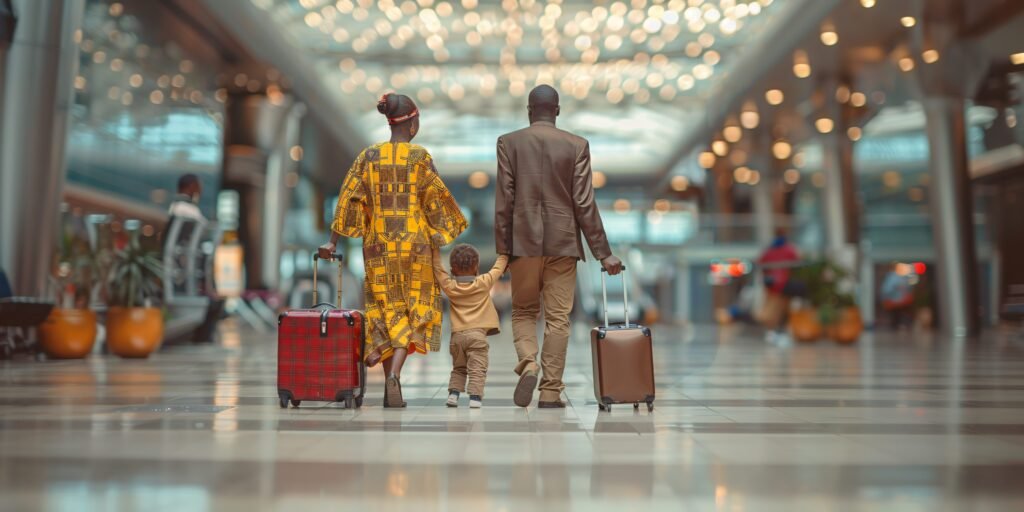Wayfarer Weekly: Mapping Global Travel Patterns
Travel has always been a central part of human movement, whether for trade, migration, exploration, or cultural exchange. In recent decades, modern transportation systems and digital resources have reshaped how journeys are planned and experienced. Platforms such as Wayfarer Weekly play a role in documenting these shifts by collecting information, analyzing data, and providing insights into travel practices.
This article examines the nature of global travel patterns, the factors that influence them, and the structural frameworks that guide international mobility. Without focusing on positive or negative judgment, the discussion highlights the organization of travel systems, modes of transportation, policy landscapes, and cultural intersections.
Historical Background of Travel

Early Routes and Exchanges
Travel historically began with simple pathways used by traders and nomadic groups. Networks such as the Silk Road connected Asia, the Middle East, and Europe, fostering the movement of goods and ideas. Maritime routes in the Indian Ocean linked coastal civilizations, demonstrating how geography and seasonal winds shaped early global connections.
Development of Transportation Systems
With technological progress, travel modes expanded from walking and horseback to carriages, trains, ships, and later, airplanes. Each transition introduced broader possibilities: railways in the 19th century connected inland cities, while aviation in the 20th century reduced long-distance travel time.
Institutionalization of Travel
Governments began regulating travel with the introduction of passports, visas, and border checkpoints. Over time, international conventions standardized documents and safety procedures. These systems remain essential for global mobility today.
Modern Travel Infrastructure
Aviation Networks
Airports serve as central hubs that coordinate regional and intercontinental movement. International air travel is regulated by organizations such as the International Air Transport Association (IATA), ensuring alignment in scheduling, safety, and navigation systems.
Rail and Road Systems
Rail networks continue to be significant in Europe, Asia, and parts of North America. High-speed rail in countries like Japan and France demonstrates how efficiency can reorganize domestic travel flows. Road systems, from highways to bus routes, remain critical for regional travel and local commuting.
Maritime Transport
Ferries, cruise liners, and cargo ships contribute to passenger and trade movement. Port authorities regulate documentation, customs, and entry points, aligning with international maritime law.
Digital Platforms and Travel Documentation
Role of Information Platforms
Resources such as Wayfarer Weekly provide structured insights into current travel regulations, transportation schedules, and entry requirements. These platforms compile official updates and present them in accessible formats.
Online Booking and Navigation
Travelers increasingly rely on digital booking systems for flights, trains, hotels, and guided tours. Online maps and navigation tools have largely replaced paper atlases, enabling real-time updates.
Data and Predictive Analytics
Modern platforms incorporate predictive analytics, forecasting travel demand, and route popularity. This assists both institutions and individuals in preparing for seasonal or regional shifts.
Factors Shaping Global Travel
Economic Influence
Wayfarer Weekly Travel flows often reflect economic centers. Major business hubs attract conferences, trade fairs, and workforce mobility. Tourism regions depend on income from international visitors.
Political Frameworks
Visa policies, regional agreements, and security regulations directly affect mobility. For example, the Schengen Agreement in Europe allows travel across multiple states without internal border checks.
Environmental Considerations
Weather conditions, natural landscapes, and seasonal variations determine when and how travel occurs. Climate zones influence peak tourist periods, such as winter ski seasons or summer beach travel.
Cultural and Social Dimensions
Cultural heritage, festivals, and educational exchanges encourage travel. Pilgrimage routes and cultural tourism reflect the intersection between identity and mobility.
Travel Policy and Regulation
Border Control
Each nation maintains authority over entry and exit. Documentation includes passports, visas, vaccination records, and customs declarations.
International Agreements
Treaties and organizations establish cooperation frameworks, including aviation safety standards, maritime law, and cross-border rail operation.
Safety and Compliance
Policies address travel safety through standardized checks, security screenings, and emergency protocols. These measures ensure coordinated responses across multiple jurisdictions.
Travel Trends Observed in Global Reports
Urban Tourism
Wayfarer Weekly Cities continue to dominate as primary destinations due to infrastructure, cultural attractions, and accessibility. Data indicates that metropolitan areas account for a large percentage of annual travel.
Regional Corridors
Travel corridors link specific regions through frequent connections. Examples include Europe’s high-speed rail systems and Southeast Asia’s intercity bus networks.
Long-Haul Routes
Intercontinental aviation remains a defining element of global travel. Routes such as trans-Atlantic and trans-Pacific connections form central air traffic flows.
Cultural Dimensions of Travel
Cross-Cultural Exchange
Travel encourages interaction between different languages, cuisines, and traditions. Institutions track cultural heritage tourism as a measurable category within global reports.
Education and Research Mobility
Universities maintain exchange programs that generate continuous movement of students and academics. These flows align with global education rankings and international research networks.
Pilgrimage and Religious Travel
Sacred sites and ritual journeys remain part of structured mobility patterns. Religious travel accounts for significant annual movement, particularly during large-scale gatherings.
Role of Media and Reporting
Documenting Travel Updates
Publications like Wayfarer Weekly compile neutral information on travel notices, global events, and new transportation developments. Their function lies in collecting data from verified sources and presenting structured updates.
Standardization of Information
Consistency in reporting travel schedules, visa requirements, and policy changes assists in reducing uncertainty. Platforms organize this data without assigning judgment.
Influence on Travel Planning
While not directive, such reporting provides reference material for individuals, businesses, and institutions when coordinating journeys.
Challenges and Adaptations
Infrastructure Maintenance
Roads, railways, and airports require ongoing maintenance and expansion. Authorities address this through funding models and international cooperation.
Administrative Barriers
Visa application processes, entry documentation, and international standards often require continuous updates to align with global shifts.
Information Management
The digital age demands constant updates. Platforms such as Wayfarer Weekly adapt by integrating real-time reporting systems and broad databases.
Travel and Technology Integration

Artificial Intelligence in Travel
AI assists in predicting route demand, optimizing pricing, and identifying potential disruptions.
Virtual Documentation
Digital visas and biometric passports are increasingly replacing traditional paper documents. These streamline border control while adhering to global standards.
Real-Time Tracking
GPS and satellite systems allow real-time monitoring of flights, trains, and ships, enabling accurate scheduling.
Wayfarer Weekly’s Role in Context
Wayfarer Weekly serves as a case study for structured travel reporting. Its purpose lies in collating official data, analyzing mobility trends, and publishing updates in accessible formats. Unlike promotional platforms, it emphasizes neutrality, focusing on schedules, regulations, and observed travel flows.
By doing so, it contributes to a broader understanding of how global movement operates, situating its reports within the wider travel media ecosystem.
Conclusion
Global travel remains an intricate system shaped by economic, political, cultural, and technological dimensions. From historical routes like the Silk Road to modern high-speed rail and international aviation, mobility reflects both continuity and adaptation. Digital platforms such as Wayfarer Weekly illustrate how information is now central to navigating these systems.
Rather than presenting travel as inherently beneficial or problematic, this article has outlined the frameworks that sustain it. Movement across borders, participation in cultural exchanges, and adherence to regulatory policies demonstrate how structured mobility continues to evolve.
Travel will remain a defining element of global interaction, and neutral reporting ensures that its organization is clearly documented for future reference.
